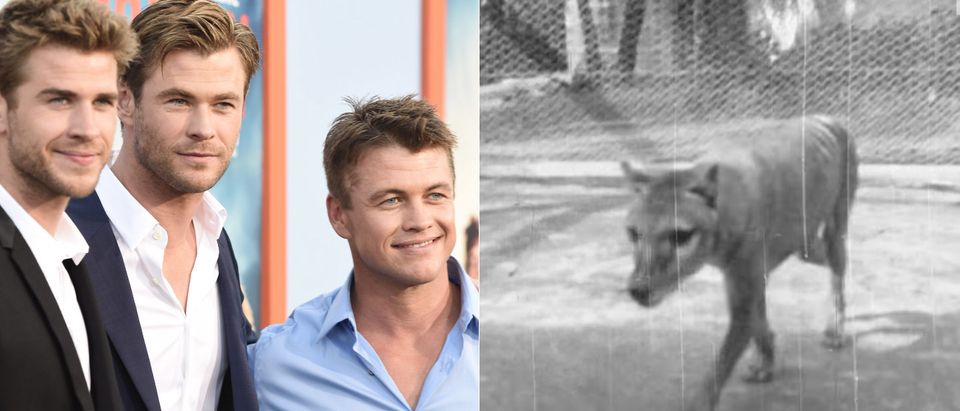Chris, Liam, and Luke Hemsworth are collaborating with scientists and entrepreneurs to bring the extinct Tasmanian tiger back to life.
Colossal Biosciences, a genetic engineering and de-extinction company started in 2021, and the University of Melbourne’s Thylacine Integrated Genetic Restoration Research Lab are leading the charge in the research, according to The Jerusalem Post. The brothers are part of a pool of investors hoping to revive the extinct thylacine, also known as a Tasmanian tiger or wolf, the outlet noted.
The team behind the genetic engineering is manipulating the DNA of a teeny tiny creature called a dunnart — the Tasmanian tiger’s closest living relative — to become more like that of the thylacine, University of Melbourne’s lab lead Andrew Pask explained, according to the New York Post.
“The removal of an apex predator, especially due to human eradication, has a devastating effect on our ecosystem and contributes to such issues such as the spread of disease, overpopulation of certain species and the disruption of native plant life,” Chris Hemsworth told the NY Post. “Returning iconic species such as the Tassie tiger remain top priority.”
The last surviving Tasmanian Tiger (named Benjamin) held in captivity at Beaumaris Zoo in Tasmania, Australia pic.twitter.com/GxzyhLCOsY
— Historic Vids (@historyinmemes) August 15, 2022
Tasmanian tigers were carnivorous dog-like creatures that lived across Australia and parts of New Guinea and Tasmania, according to The Jerusalem Post. The animal’s nickname stems from the distinctive stripes found down its back, despite being the largest carnivorous marsupial believed to exist in modern times with a “considerably different lineage” to cats or dogs. (RELATED: Stephen Hawking Had One Clear Warning About Aliens. Scientists Are Ignoring It)
Images of Tasmanian tigers date back as far as 1000BC, but they had become extinct on Australia’s mainland well before European settlers landed, according to OneKindPlanet. The last known Tasmanian tiger died in Hobart Zoo in Tasmania in 1936. It took until 1986 for the creature to be officially declared extinct, though even now some zoologists believe they’re still alive.


